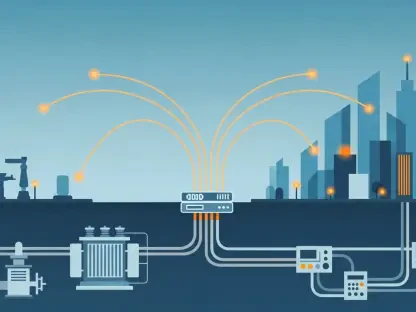The sock manufacturing industry is experiencing transformative changes driven by the pursuit of sustainability and eco-friendliness. With growing awareness of environmental issues among consumers, there is a marked shift towards the use of sustainable materials and innovative production techniques. This article explores the trends, technologies, and market dynamics driving this change, as well as the role of consumer education in fostering a more sustainable future for the industry.
Sustainable Materials
A prominent trend in the sock manufacturing industry is the adoption of eco-friendly materials, which includes bamboo, organic cotton, and recycled polyester. Bamboo is an attractive option due to its minimal water requirements and pesticide-free growth, making it a highly sustainable choice. Additionally, organic cotton is gaining popularity because of its significantly lower water consumption and benefits to soil health compared to conventional cotton, which makes it an environmentally friendly alternative.
Recycled polyester, derived from post-consumer waste such as plastic bottles, is another eco-friendly material gaining traction within the industry. This material helps reduce landfill waste and requires up to 50% less energy during production compared to its virgin counterpart. By using these sustainable materials, the sock manufacturing industry helps reduce its environmental impact and meets the increasing consumer demand for more eco-conscious products.
Innovative Production Techniques
Advancements in production techniques are reshaping the industry by enabling manufacturers to create customized products with a smaller environmental footprint. Artificial intelligence (AI) and machine learning are being employed for real-time monitoring and predictive maintenance, which minimizes downtime and enhances overall production efficiency. These advancements contribute to a reduction in waste and energy consumption, making the production process more sustainable.
Digital printing technology, adapted from other industries, is also gradually making its way into sock manufacturing. This method allows for the creation of vibrant, durable designs using significantly less dye than traditional coloring methods. As a result, digital printing helps reduce the environmental burden of conventional production processes while providing consumers with high-quality, eco-friendly products.
Market Trends and Opportunities
The rising consumer awareness and demand for sustainable and customized socks have led to significant changes in market strategies within the industry. Brands are focusing on introducing eco-friendly product lines and adopting marketing strategies that emphasize performance, style, versatility, and sustainability. By prioritizing these aspects, companies can appeal to consumers who value ethical responsibility and are willing to support environmentally conscious products.
This trend presents numerous opportunities for brands to differentiate themselves in a competitive market. By leveraging sustainable practices, companies can attract a growing segment of consumers who prioritize environmental impact in their purchasing decisions. Brands that successfully integrate sustainability into their core values and marketing strategies will likely experience long-term growth and customer loyalty in this evolving market landscape.
Technological Innovations
Technological advancements play a crucial role in improving production efficiency and quality control within the sock manufacturing industry. The integration of AI and the Internet of Things (IoT) at the sizing stage ensures that socks meet high standards of comfort and durability. These technologies enable precise measurements and adjustments, resulting in consistently high-quality products with minimized waste.
Moreover, the development of smart socks, which incorporate wearable technology such as triboelectric sensors, represents an exciting new trend in the industry. These sensors can monitor health metrics like gait and provide real-time feedback to users, offering added value and functionality. This innovative integration of technology not only enhances the user experience but also highlights the industry’s commitment to staying at the forefront of sustainable and advanced manufacturing practices.
Consumer Awareness and Education
Educating consumers about the benefits of eco-friendly socks is essential for promoting mindful purchasing and supporting the slow fashion movement. Brands are actively leveraging social media and influencer marketing to disseminate information about sustainable fashion practices and the environmental impacts of conventional production processes. Through these channels, companies can effectively communicate the value of eco-conscious products and foster a deeper understanding of their environmental benefits.
By emphasizing the sustainable features of their products, brands can build loyalty among environmentally conscious consumers who prioritize making responsible choices. As awareness continues to grow, the demand for sustainable socks will likely increase, encouraging more companies to adopt eco-friendly practices and further driving the industry’s transformation toward a greener future.
Global Market Outlook
The sock industry’s growth trajectory is impressive, with projections estimating the global market to reach $54.30 billion this year. The Asia-Pacific region is expected to lead this growth, driven by rising disposable incomes and urbanization in countries like China and India. This growth is creating a diverse market, with a noticeable shift from casual socks to specialized variants.
Athletic socks, for instance, are projected to grow at a compound annual growth rate (CAGR) of 7.7%. This trend indicates a consumer shift towards functional products that cater to specific needs, such as sports performance and health benefits. As the market becomes increasingly diverse, opportunities arise for brands to capitalize on these trends and provide tailored solutions that meet consumers’ evolving needs and preferences.
Future Directions and Challenges
The sock manufacturing industry is undergoing significant transformations driven by the quest for sustainability and eco-friendliness. As consumers become increasingly conscious of environmental issues, there’s a clear movement towards using sustainable materials and adopting innovative production techniques. This change reflects a broader market trend, where companies are incentivized to reduce their carbon footprint and environmental impact. The adoption of organic cotton, recycled fibers, and biodegradable materials is becoming more common. Additionally, technological advancements, such as water-efficient dyeing processes and energy-efficient machinery, are playing a crucial role. Consumer education is also pivotal, as informed buyers actively seek products that align with eco-friendly values, thereby encouraging brands to prioritize sustainable practices. This article delves into the key trends, emerging technologies, and market dynamics propelling these changes, shedding light on the essential role consumer awareness plays in fostering a greener future for the sock industry.









